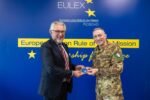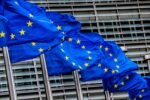Ukrainian President Volodymyr Zelensky visited Brussels on October 17 to present a five-point “Victory Plan” first to EU leaders and then to NATO defense ministers.
Neither organization has outright rejected the plan, and it’s fair to say they have been accommodating towards Kyiv.
However, neither the first nor the second points offer much hope. The first point calls for Ukraine to receive an invitation to join NATO, while the second seeks permission to use long-range weapons—provided by the West—on Russian territory.
Kyiv has long requested these two points, but has not received the green light.
Ukraine wants the NATO invitation now, with membership to follow after the war ends. This aims to alleviate fears among NATO members that they might be drawn into direct confrontation with Moscow.
This request was made at the NATO summit in Vilnius last year and again at this year’s summit in Washington.
In response, the military alliance has confirmed that Ukraine will one day be a member, using phrases like “bridge to membership” or “its path to membership is irreversible.”
When asked about the invitation, NATO Secretary General Mark Rutte reiterated the same sentiments, emphasizing everything the organization is doing for the war-torn country.
U.S. Ambassador to NATO Julianne Smith sounded similarly non-committal. This indicates that nothing new has emerged. “We haven’t moved beyond Vilnius and Washington,” is a common refrain heard in NATO discussions.
The same can be said for the request to attack deep within Russia. This is primarily a U.S. decision, and it seems Washington is not inclined to allow it.
Zelensky returned empty-handed from his trip to the U.S. in September, and little appears to have changed, especially considering that the U.S. is on the brink of presidential elections on November 5.
Regarding this, there may be limited permissions in the future, but one shouldn’t expect them to be loudly announced in the media.
With the first two points hard to realize, the remaining three—deterring Russia through a non-nuclear strategic deterrent package based on Ukrainian soil, joint protection of Ukraine’s critical natural resources by the U.S. and EU, and replacing some U.S. troops stationed in Europe with Ukrainian soldiers after the war—are now subject to debate.
Zelensky has always known that this would be a tough bargain.
But for now, facing a winter expected to be harsh and exhausting, he has gambled, placing the ball in the West’s court.







